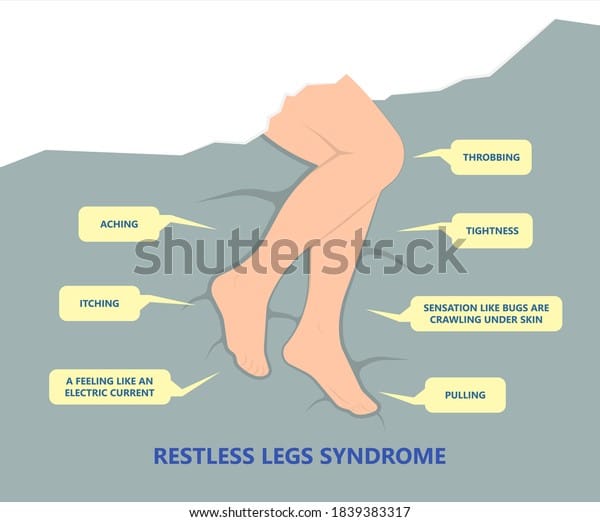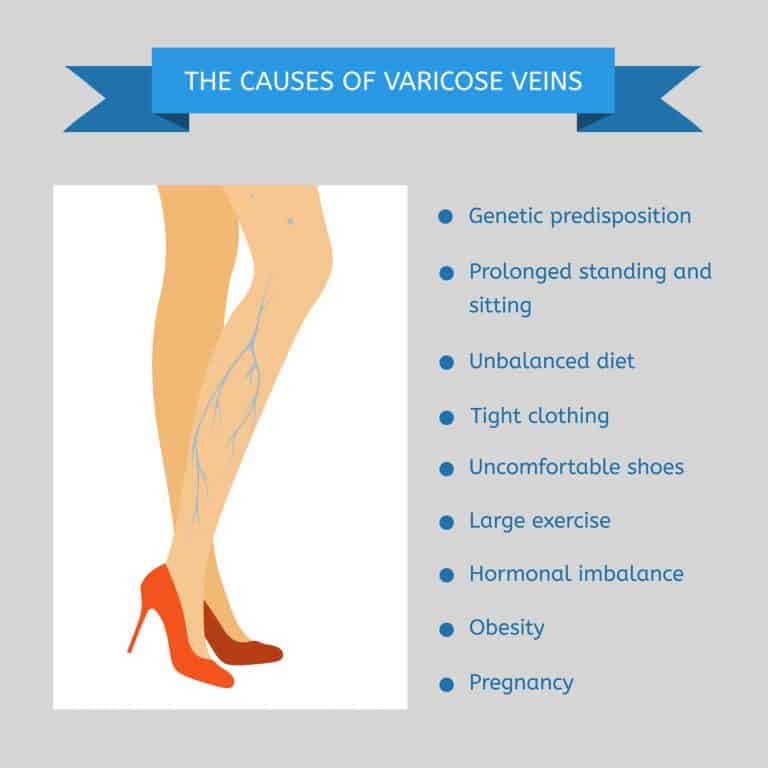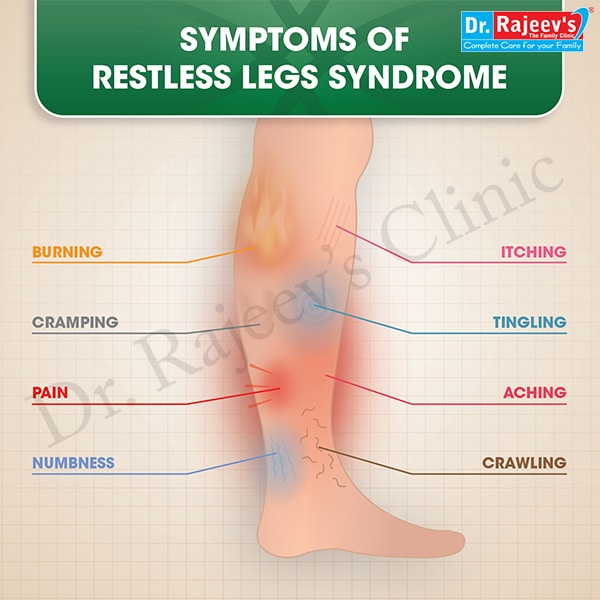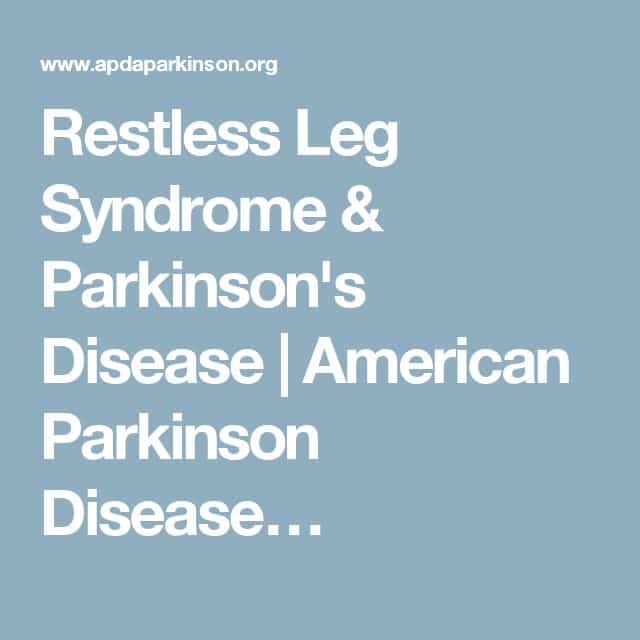What Should I Do If I Forget A Dose
If you are taking regular pramipexole tablets to treat Parkinson’s disease, take the missed dose as soon as you remember it. However, if it is almost time for the next dose, skip the missed dose and continue your regular dosing schedule. Do not take a double dose to make up for a missed one.
If you are taking regular pramipexole tablets to treat restless legs syndrome, skip the missed dose. Take your regular dose 2 to 3 hours before your next bedtime. Do not double the next dose to make up for the missed dose.
If you are taking the extended-release pramipexole tablets and you miss a dose, take the missed dose as soon as you remember it. However, if more than 12 hours passed since your missed dose, skip the missed dose and continue your regular dosing schedule. Do not take a double dose to make up for a missed one.
What Else Can I Do To Cope With Restless Legs Syndrome
Depression and anxiety commonly result from restless legs syndrome. If you have moderate to severe RLS, it’s important to find ways to cope with the stress it can cause. Here are a few ways to take control:
- Work with your doctor. A different drug or combinations of drugs are often necessary to control symptoms.
- Join a support group. www.rls.org can get you started.
- If you feel overwhelmed by RLS, talk with someone who treats mental health, like a psychologist or psychiatrist.
When Should I See A Doctor About Restless Legs Syndrome
You should see a doctor to confirm the diagnosis of RLS and to exclude other conditions that may resemble RLS. The doctor can treat associated problems like iron deficiency.
If you have RLS, you should also see a doctor if you are:
- Feeling depressed or anxious
- Having trouble concentrating
You dont have to wait until one of these things happens. If you just want to feel better, see your doctor.
Other Conditions Associated With Restless Legs Syndrome
The following medical conditions are also associated with RLS, although the relationships are not clear. In some cases, these conditions may contribute to RLS. Others may have a common cause, or they may coexist due to other risk factors:
- Osteoarthritis . About three-quarters of patients with RLS also have osteoarthritis, a common condition affecting older adults.
- Varicose veins. Varicose veins occur in about 1 in 7 patients with RLS.
- Diabetes. People with type 2 diabetes may have higher rates of secondary RLS. Nerve pain related to their diabetes cannot fully explain the higher rate of RLS.
- Psychiatric disorders, such as depression.
The Link Between Rls And Parkinsons: Dopamine Agonists
Dr. Poceta is a Consultant in Neurology and Sleep Disorders in the Division of Neurology, Scripps Clinic, La Jolla, and the Scripps Clinic Sleep Center. His current interests include organized medicine and Internet medicine.
What Are Common Signs And Symptoms Of Restless Legs
Recommended Reading: Judy Woodruff Parkinsons
Read Also: Is Beer Good For Parkinson’s
Restless Legs Syndrome And Its Associated Risk Factors In Parkinsons Disease
Mohamed Ibrahim NorlinahAcademic Editor: Received
Abstract
Introduction. Restless legs syndrome has been shown to negatively impact the quality of life of patients. Studies have shown an association between restless legs syndrome and Parkinsons disease. We attempted to investigate the prevalence of restless legs syndrome in Parkinsons disease patients and to identify associated risk factors. Method. This was a cross-sectional study among patients with idiopathic Parkinsons disease. Exclusion criterion was a Mini Mental State Examination score of less than 21/30. The International Restless Legs Syndrome Study Group criterion was used to identify patients with restless legs syndrome. Results. A total of 113 patients were recruited. The prevalence rate of restless legs syndrome in our cohort was 9.7% and was significantly associated with a younger onset of Parkinsons disease , male gender , higher Mini Mental State Examination score , and less advanced Hoehn & Yahr stage . . The prevalence rate of restless legs syndrome in our Parkinsons disease population is in keeping with other studies published worldwide. The significance of the association between a younger onset of Parkinsons disease and restless legs syndrome needs to be further investigated.
1. Introduction
We aim to study the prevalence of RLS in PD patients in Malaysia. We also attempted to investigate any possible risk factors that could be associated with RLS in PD patients.
2. Methodology
3. Results
Study Design And Population

This is an observational longitudinal study evaluating RLS prevalence in a population of newly diagnosed, drug-naïve PD subjects, and RLS incidence during 4-year disease course. PD subjects have been consecutively enrolled in the Movement Disorder Unit, at the Federico II University Hospital , between January 2008 and June 2009 . The local Ethics Committee approved the study and all subjects gave informed consent. The study was performed in accordance with good clinical practices and the Declaration of Helsinki.
Inclusion criteria were: presence of Parkinson disease according to the United Kingdom Parkinsons Disease Society Brain Bank Diagnostic Criteria, reported symptom duration < 24 months no previous or current treatment with dopaminergic drugs and lack of significant cerebral lesions on MRI or CT. Exclusion criteria were: diagnosis of secondary, familial, or atypical parkinsonism, according to current diagnostic criteria. Patients with clinical signs suggestive of an alternative diagnosis at 2- and 4-year follow-up evaluations were excluded.
Recommended Reading: Does Parkinson’s Make You Sleep A Lot
Characteristics Of Restless Leg Syndrome
There are certain features of RLS that make it a unique and specific disorder.
Impact Of Symptoms On Sleep
The symptoms of Parkinsons really impact on sleep. These symptoms include tremor, rigidity, dyskinesia, depression, nighttime urination, pain, dystonia, breathing issues, REM sleep disorder, and restless leg syndrome.
There may also be other underlying causes of sleep problems which may be unrelated to Parkinsons and these need to be investigated.
Common complaints about sleep from people with Parkinsons are:
- Medications are not lasting the full time a that is wearing off.
- A difficulty getting in and out of bed.
- Difficulty turning over in bed.
- Need to get up to the bathroom overnight sometimes several times.
- Dystonia or prolonged muscle cramping.
- Anxiety and depression.
- REM sleep disorder.
Sleep issues should always be discussed with your neurologist. A medication review may be able to improve the symptoms and manage things better to improve sleep, which then impacts positively on the rest of your day.
Read Also: Can You Drink Alcohol When You Have Parkinson’s Disease
Cautions With Other Medicines
There are some medicines that do not mix well with ropinirole.
Tell your doctor, specialist nurse or pharmacist if you’re taking any of these medicines before starting ropinirole:
- anti-sickness medicines, such as metoclopramide or prochlorperazine
- antidepressants or antipsychotic medicines, such as fluvoxamine, amisulpride, risperidone or haloperiodol
- hormone replacement therapy or contraceptives that contain high levels of oestrogen
- medicines that can lower your blood pressure blood pressure medicines, tablets that make you pee more , or erectile dysfunction medicines such as sildenafil or tadalafil
- warfarin, to prevent blood clots
What Is The Link Between Restless Legs Syndrome And Periodic Limb Movement Disorder
More than 80% of people with restless legs syndrome also have periodic limb movement disorder, or PLMD. In PLMD, the arms or legs twitch or jerk during the night. The movements disturb sleep and can cause chronic sleepiness.
Many people have periodic limb movement disorder by itself and will never develop restless legs syndrome. If you think you have PLMD, see your doctor.
Show Sources
Recommended Reading: Judy Woodruff Health Problems
Don’t Miss: Gait Training Exercises For Parkinson’s
Attention Deficit Hyperactivity Disorder
There is significant overlap between some of the symptoms and treatments for RLS and attention deficit hyperactive disorder . Up to a quarter of children diagnosed with attention-deficit hyperactivity disorder may also have RLS, sleep apnea, or PLMD. These conditions may actually contribute to inattentiveness and hyperactivity. The disorders have much in common, including poor sleep habits, twitching, and the need to get up suddenly and walk about frequently. Some evidence suggests that the link between the diseases may be a deficiency in the brain chemical dopamine.
Also Check: Zhichan Capsule
What Is Parkinson Disease
Parkinson disease is a movement disorder. It can cause the muscles to tighten and become rigid This makes it hard to walk and do other daily activities. People with Parkinsons disease also have tremors and may develop cognitive problems, including memory loss and dementia.
Parkinson disease is most common in people who are older than 50. The average age at which it occurs is 60. But some younger people may also get Parkinson disease. When it affects someone younger than age 50, its called early-onset Parkinson disease. You may be more likely to get early-onset Parkinson disease if someone in your family has it. The older you are, the greater your risk of developing Parkinson disease. Its also much more common in men than in women.
Parkinson disease is a chronic and progressive disease. It doesnt go away and continues to get worse over time.
Medications used in the treatment of restless legs syndrome include the following:
-
Dopaminergic agents
-
Alpha2 -adrenergic agonists
A network meta-analysis of 10,674 participants found that, compared with placebo, only levodopa is inefficient to relieve symptoms of RLS. The researchers recommend gabapentin, gabapentin enacarbil, and pregabalin as first-line treatement. Oxycodone-naloxone could be considered in patients with severe or very severe RLS who failed in treatment with other drugs.
Read Also: Diseases Similar To Parkinsons
You May Like: How Many Stages Of Parkinson’s Disease Are There
Restless Legs Syndrome And Periodic Limb Movement Disorder
Most people who have RLS also have a condition called periodic limb movement disorder . PLMD involves repetitive flexing or twitching of the limbs while asleep at night. It is different from RLS in that these movements are not accompanied by uncomfortable sensations and because they occur during sleep, patients are often not aware of them. However, PLMD-associated movements can cause a person to wake up and therefore can compound sleep issues in patients who also have RLS.
Although most people with RLS have PLMD, many with PLMD do not have RLS.
Manage Your Diet With A Dietitian

Not having enough iron in your body can cause restless legs syndrome. Your healthcare professional can check your iron levels for you.
You could try an iron supplement or eating iron-rich food such as red meat, fish or certain fruit like prunes. Talk to a dietitian to get support before making changes to your diet.
You May Like: Fatigue And Parkinson’s Disease
Medications For Restless Legs Syndrome
Daily medication is usually recommended only for people who have symptoms of restless legs syndrome at least three nights a week, or as determined by your doctor. Keep in mind that drugs used to treat primary RLS do not cure the condition, but only relieve symptoms. People whose RLS symptoms occur sporadically may be prescribed medication to take only when they have symptoms.
The following medications are the most widely prescribed to treat RLS. They may be given alone or, in certain cases, in combination. Your doctor will prescribe the best treatment plan for you.
Show Sources
Can Parkinsons Disease Be Prevented
Unfortunately, no. Parkinsons disease is long-term disease that worsens over time. Although there is no way to prevent or cure the disease , medications may significantly relieve your symptoms. In some patients especially those with later-stage disease, surgery to improve symptoms may be an option.
Also Check: Parkinson Silverware
Recommended Reading: Is Dementia With Lewy Bodies Similar To Parkinson’s
Restless Legs Syndrome And Nutrition
Many cases of RLS are associated with iron deficiency, which can be treated with iron supplements. These have few side effects apart from stomach complaints and constipation, and they work to reduce symptoms of RLS in many people with low iron and ferritin levels or iron-deficiency anemia. After checking your iron and ferritin levels, your doctor may prescribe iron supplements alone or in conjunction with other medications.
Other vitamins and minerals such as magnesium, zinc, and vitamin D may also play a role in RLS. Pregnant women in particular may benefit from folate supplements, while people with kidney problems may benefit from vitamin C and E supplements.
Also Check: Zhichan Capsule
Who Can And Cannot Take Ropinirole
Most adults can take ropinirole. However, its not suitable for everyone.
To make sure its OK for you, tell your doctor if you:
- have ever had an allergic reaction to ropinirole or any other medicine
- have a serious heart condition or problems with your blood pressure
- have a serious mental health condition such as psychosis
- are pregnant, trying to get pregnant, or breastfeeding
Also Check: Judy Woodruff Parkinsons
Recommended Reading: When Do Parkinson’s Symptoms Start
Fatigue Sleep Difficulties And Restless Legs
Although Parkinsons is classified as a movement disorder, it can affect people in various different ways. Sometimes the non-movement symptoms can be more troublesome and can have a bigger impact on the daily life of someone living with Parkinsons.
Some of the more common non-movement symptoms of Parkinsons are:
You May Like: Sleep Problems With Parkinsons Disease
The Link Between Rls And Parkinsons: Dopamine Agonists
Although the cause of RLS remains unknown, we know that RLS runs in families in about one-half of the cases, and that some families have an abnormality on chromosome 12. Because RLS is well treated by medications that also treat Parkinsons disease, it is likely that some aspect of brain dopamine function is altered in RLS. However, unlike in Parkinsons disease, in which the deficit in substantia nigra dopamine-producing cells can be proven in many ways, no such abnormality has been shown in RLS. For example, studies show that there is no major deficit on PET or other imaging studies of the brain, as is there is in PD. The spinal fluid is normal in RLS, but shows low dopamine in PD.
Lastly, RLS does not progress to cause other major symptoms such as tremor, gait disorder, or loss of taste or smell, and does not progress to PD. In fact, one of the leading possibilities as the cause of RLS and for which there is good scientific evidence and much research is a form of iron-transport abnormality in the brain. In effect, RLS patients may have low levels of iron in brain nerve cellsjust the opposite of some portions of the brain in PD.
Dr. Poceta is a Consultant in Neurology and Sleep Disorders in the Division of Neurology, Scripps Clinic, La Jolla, and the Scripps Clinic Sleep Center. His current interests include organized medicine and Internet medicine.
You May Like: What To Do For Parkinson’s Cough
Demographic Information Of Pd
The demographic variables were compared between PD-RLS and PD-NRLS groups, and the data showed a significantly longer disease duration in PD-RLS group than that in PD-NRLS group .
Table 1 Demographic variables of PD-RLS and PD-NRLS groups.
Further analysis suggested that RLS-RS score was negatively correlated with the levels of DA and 5-HT in CSF .
Is It Difficult To Diagnose Restless Legs Syndrome In People With Parkinson’s

Because there isn’t a specific test for restless legs syndrome, it can be difficult to diagnose the condition. Sometimes symptoms only happen briefly or from time to time.
Also, the condition can cause discomfort at night-time and this can be mistaken for arthritis in people with Parkinson’s.
Another reason why a person with Parkinson’s may experience disturbed sleep is due to dyskinesia. Dyskinesia is involuntary movements sometimes seen in people with Parkinson’s. If you’re concerned about this, speak to your GP, specialist or Parkinson’s nurse.
Your treatment will depend on how severe your symptoms are and what may be causing them.
Read Also: Does Parkinson’s Ever Go Into Remission
Correlation Between Rls Severity And Clinical Data In Pd
Correlation analyses revealed statistical significance only for the BDI and PDSS score with RLS severity. No association was found between RLS severity and parkinsonism based on the H& Y stage and scores for parkinsonism, which were significantly higher in patients with RLS. Significant correlations were found between the IRLS score and the PDSS score , ISI , SCOPA-AUT total score , and SCOPA-AUT urinary subscore . There were no correlations between IRLS scores and demographic variables, motor symptoms, and laboratory data.
Correlation analysis between RLS severity and PD nonmotor symptom severity. RLS severity was positively correlated with ISI and negatively correlated with PDSS score . The SCOPA-AUT total score and urinary subscore were positively correlated with RLS severity. IRLS: international restless legs syndrome, ISI: Insomnia Severity Index, PDSS: Parkinson’s Disease Sleep Scale, RLS: restless legs syndrome, SCOPA-AUT: Scales for Outcomes in Parkinson’s Disease for Autonomic Symptoms.

